1. Oyster Stuffing
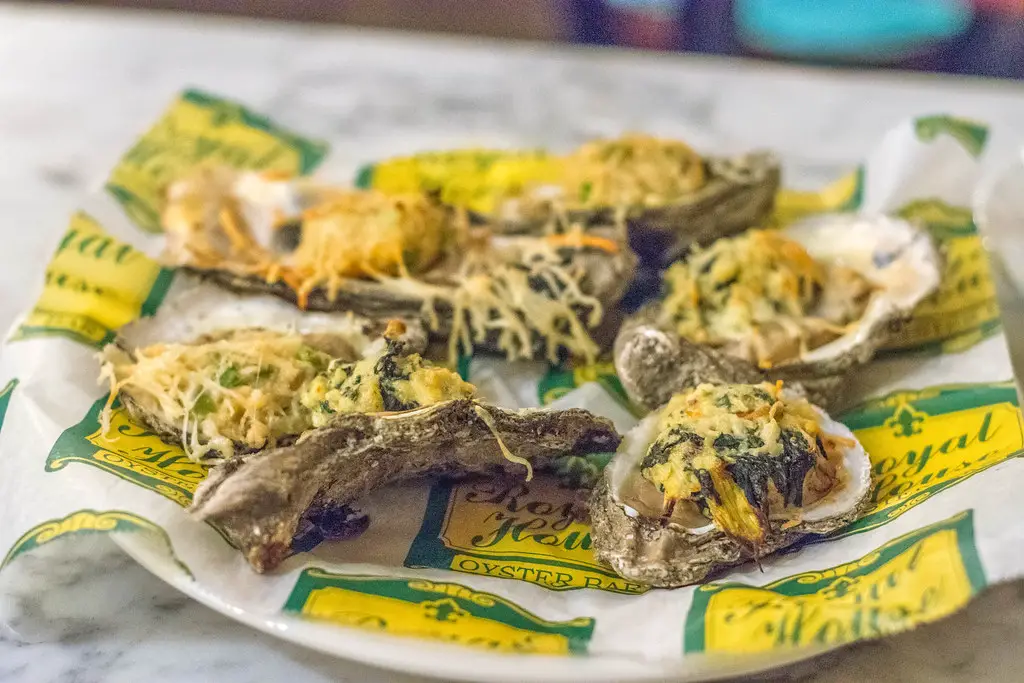
Once upon a time, oyster stuffing was a holiday staple in many households, especially on the East Coast. Families would mix oysters into bread cubes, onions, and herbs, believing it added both flavor and prestige to the Christmas table. The briny seafood taste mingled with the savory seasonings in a way that made sense back then but might cause raised eyebrows today. For those who lived near the coast, it was simply practical, as oysters were cheap and plentiful in winter.
Nowadays, the idea of shucking oysters just to bake them into stuffing feels extravagant and maybe even unappealing to guests unfamiliar with the tradition. The dish has faded from most holiday spreads, leaving people puzzled that anyone ever thought seafood belonged in their turkey. Still, oyster stuffing has its fans among older generations who fondly remember the unique taste. You’ll rarely see it served anymore, but it was once considered a centerpiece of Christmas feasts.
2. Jell-O Salad with Vegetables
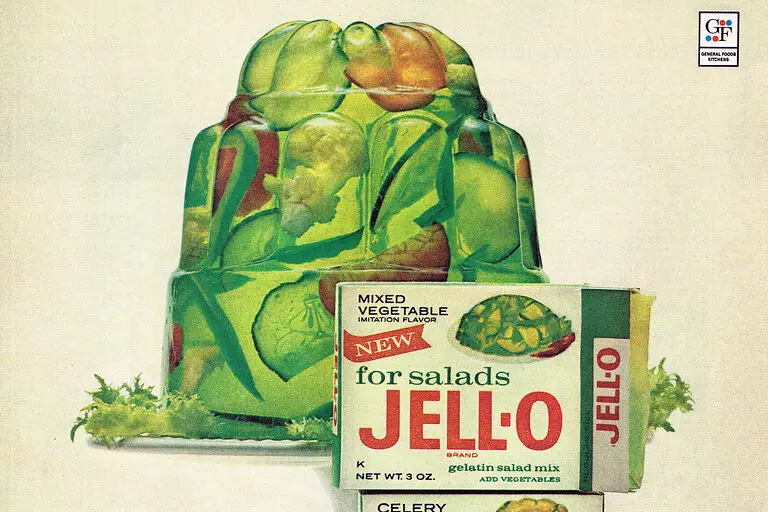
Jell-O molds weren’t just for sweet treats, they were once used to suspend chopped vegetables, olives, or even tuna. Holiday tables in the ’50s and ’60s proudly displayed these wobbly creations, often in festive shapes. The more colors you could trap inside the gelatin, the better, or so the thinking went.
Today, the idea of biting into lime Jell-O only to find a chunk of celery or shredded carrot inside sounds more like a prank than a recipe. Most modern guests would politely pass, wondering how this was ever considered appetizing. Yet for decades, it was a badge of honor for homemakers to show off their creativity with Jell-O. If you dig through old cookbooks, you’ll find dozens of variations that now feel shocking.
3. Ambrosia Salad
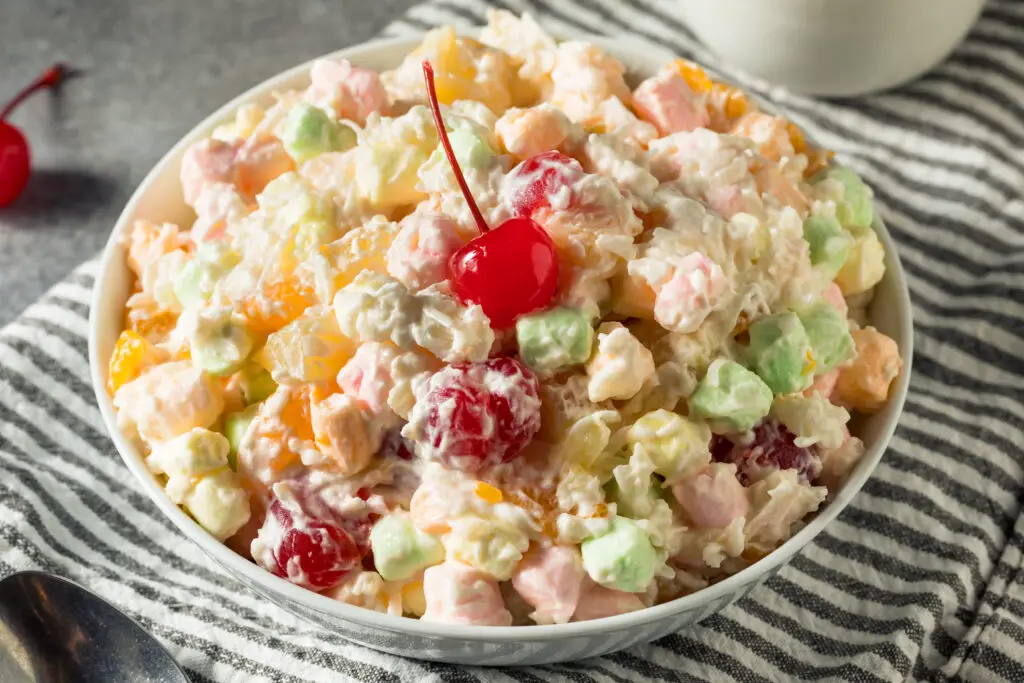
Ambrosia salad, a mix of canned fruit, mini marshmallows, shredded coconut, and whipped cream, was once a highly anticipated holiday treat. It carried an air of luxury because fruit was expensive and not always available year-round. The dish was sweet, fluffy, and colorful, which made it perfect for festive tables.
Modern tastes, however, lean away from this sugar overload. Today’s guests might find it cloying or wonder why marshmallows were considered salad material. Ambrosia still pops up in nostalgic Southern homes, but elsewhere it has largely disappeared. Its quirky combination makes it one of those dishes that feels more like a childhood memory than a present-day indulgence.
4. Plum Pudding
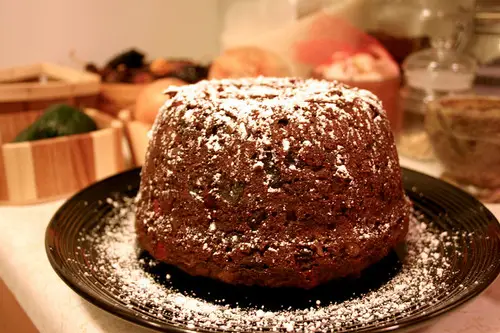
Plum pudding was once a Christmas essential in households influenced by British traditions. Despite the name, it rarely contained plums but was instead a dense mixture of suet, dried fruit, and spices, often doused in brandy and set aflame before serving. Families sometimes even hid coins inside as a good-luck charm.
Today, the richness and heaviness of the dish feel overwhelming compared to lighter holiday desserts. Guests might be more startled by the sight of a flaming pudding than impressed. Still, for many immigrants, plum pudding connected them to old-world traditions. Its disappearance from most American tables reflects how holiday desserts have shifted toward pies and cookies.
5. Tomato Aspic
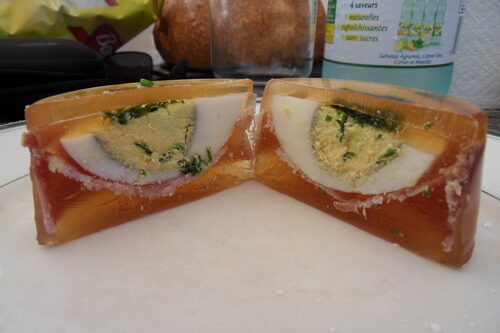
A tomato-based gelatin dish, tomato aspic was once thought to be the height of sophistication. Molded into decorative shapes, it often appeared at Christmas buffets surrounded by lettuce leaves. Some versions included hard-boiled eggs or seafood suspended in the tomato gel.
Now, the idea of a cold tomato Jell-O garnished with mayonnaise is enough to shock most modern diners. It combined two textures and flavors that don’t mix well by today’s standards. Guests might assume it’s a joke dish rather than a real recipe. But in the mid-20th century, it was a legitimate sign of culinary skill.
6. Fruitcake
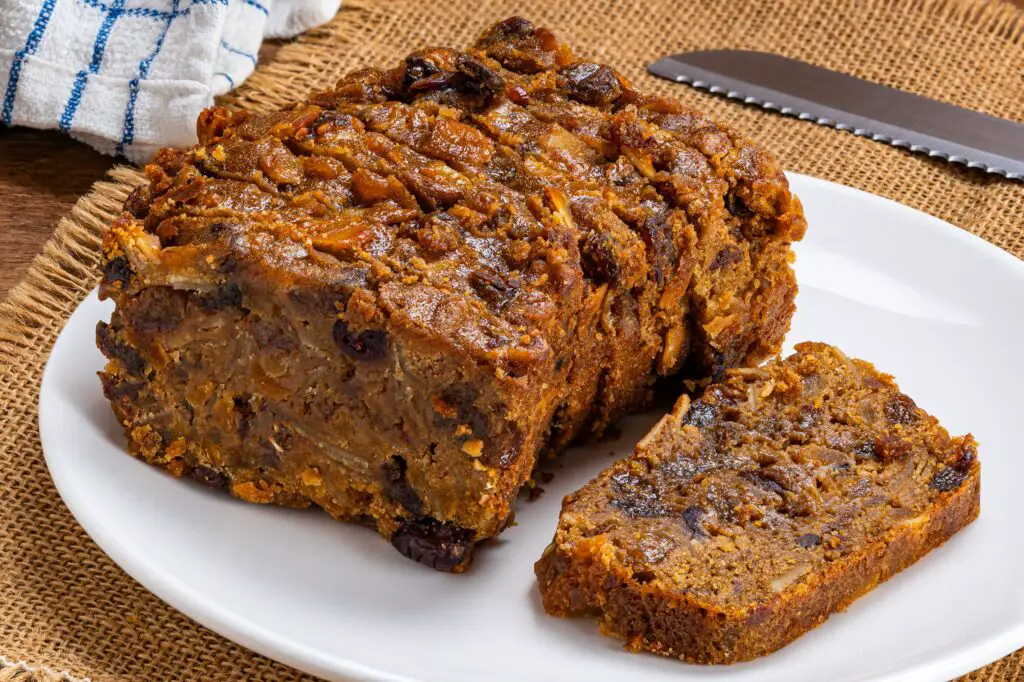
Fruitcake is infamous today, more often joked about than eaten, but it was once the jewel of the holiday dessert spread. Packed with candied fruit, nuts, and soaked in alcohol, it was built to last and sometimes passed down as a tradition. A well-made fruitcake was considered a sign of generosity and care.
Now, fruitcake has become a running holiday gag, with most people finding it dense, dry, and unappetizing. Guests often can’t believe how beloved it once was, or that families eagerly exchanged them as gifts. Despite its bad reputation, there are still bakers who swear by the original recipes. It remains one of the most polarizing holiday foods of all time.
7. Goose
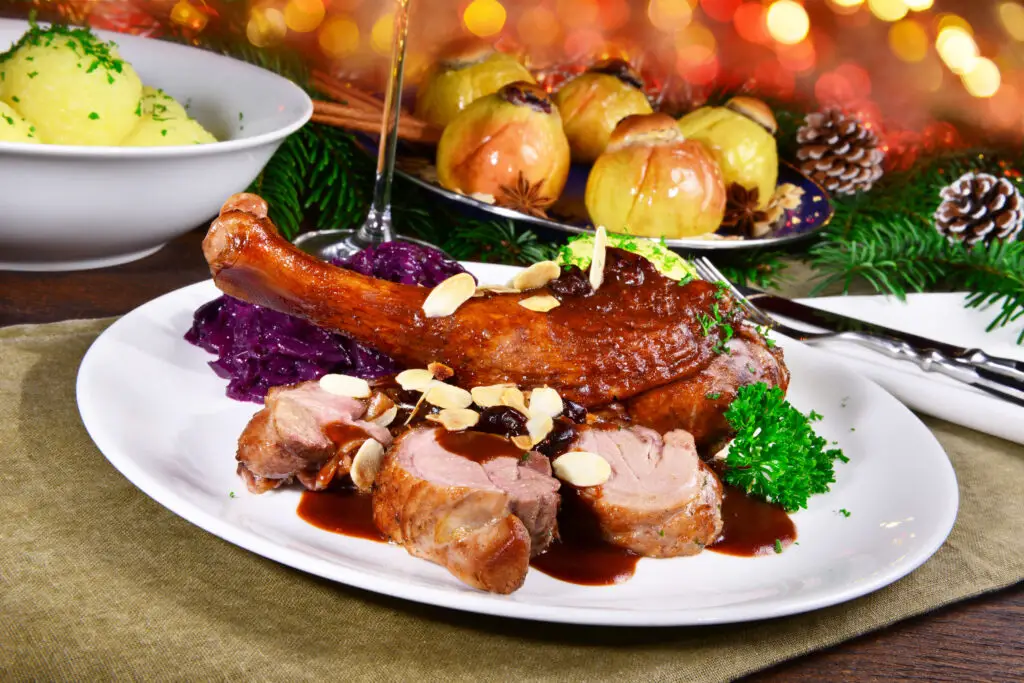
Before turkey took over, goose was the star of many holiday meals. Rich and fatty, it was seen as a hearty centerpiece that fed a large family. The tradition was carried over from Europe, where goose was often associated with Christmas feasts.
Modern guests might be surprised by just how greasy goose can be compared to the familiar turkey. The strong flavor also doesn’t appeal to everyone’s palate. As turkey became cheaper and easier to cook, goose slowly disappeared from holiday menus. Today, it’s mostly a relic of Dickensian Christmases rather than a practical choice for families.
8. Mince Pie with Meat
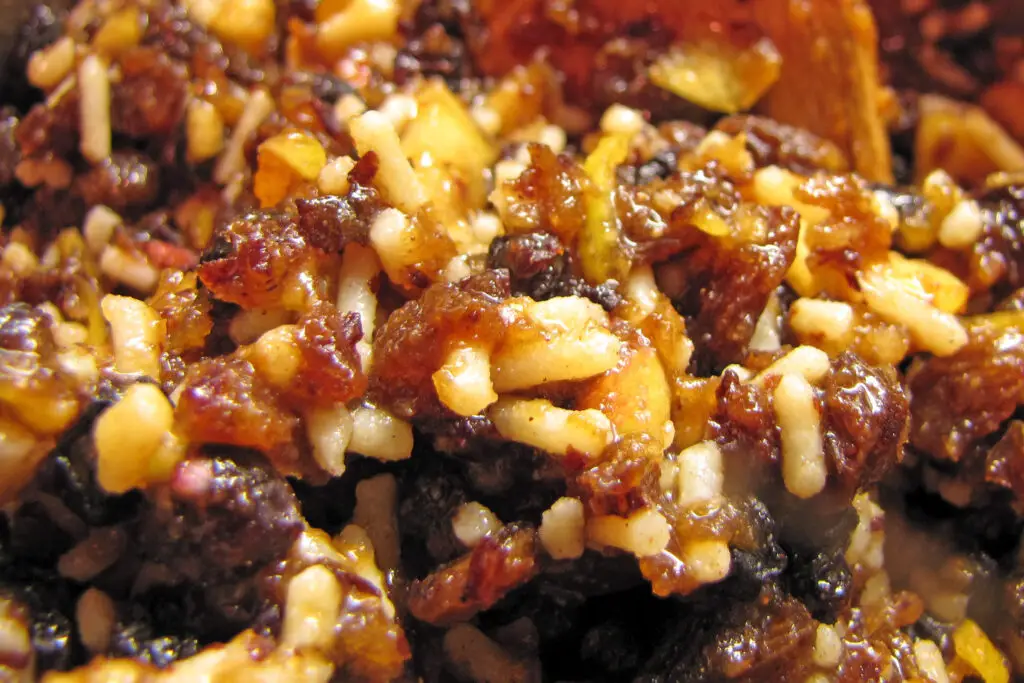
Mince pie originally contained actual minced meat along with dried fruit and spices. Over time, the meat was phased out, leaving behind the sweet mincemeat pies we think of today. But for centuries, the savory-sweet combo was a common holiday dish.
If you placed a meat-filled mince pie on the table now, your guests might do a double take. The mix of beef or venison with raisins and spices doesn’t align with modern dessert expectations. Back then, though, it was a prized recipe that symbolized abundance. Today, the thought of meat pie for dessert feels downright shocking.
9. Boiled Custard
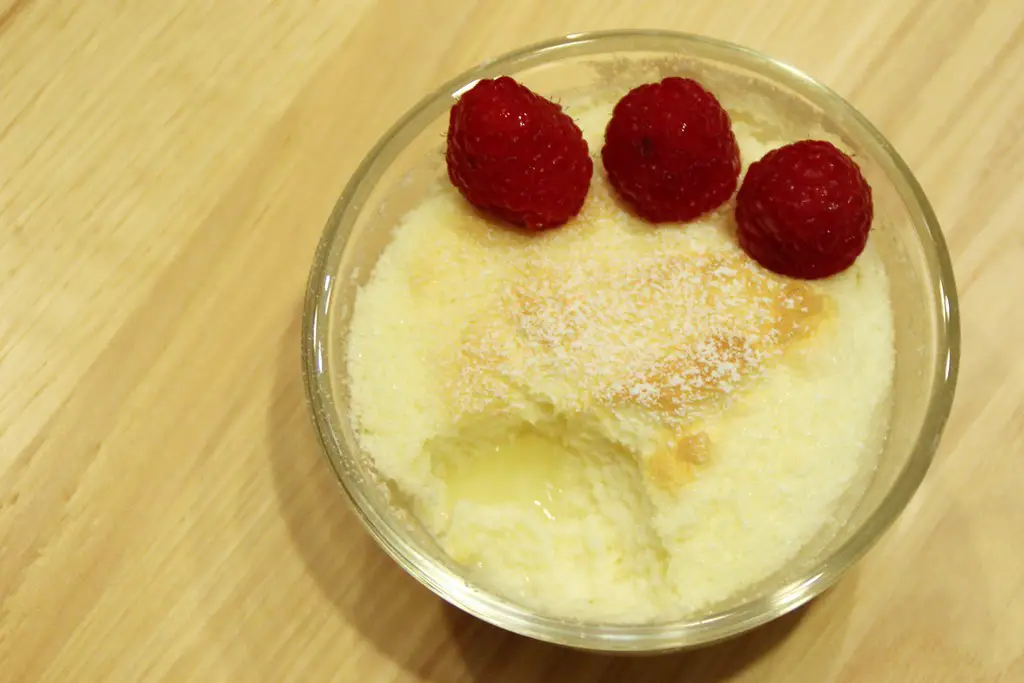
Boiled custard was once a Christmas favorite, often served as a drink in Southern households. It resembled eggnog but was cooked on the stove until thickened, then chilled and served cold. Families would sip it while opening gifts or passing around cookies.
These days, boiled custard is nearly forgotten outside a few regions. Most people prefer eggnog or store-bought alternatives. A guest offered a glass might be puzzled at the thick, pudding-like consistency. While comforting to those who grew up with it, it’s no longer part of mainstream holiday spreads.
10. Celery Logs

Celery logs, often stuffed with cream cheese and topped with pimentos or nuts, were once considered a festive appetizer. The crunch, combined with the rich filling, made them a cheap but fancy-looking snack. They were a regular feature at Christmas parties in the mid-20th century.
Today’s guests might be confused by their simplicity. With charcuterie boards and elaborate appetizers becoming the norm, a plate of celery logs would feel underwhelming. Yet, they were once a proud homemade touch at gatherings. It’s the kind of forgotten food that reflects how far holiday entertaining has evolved.
11. Crown Roast of Pork
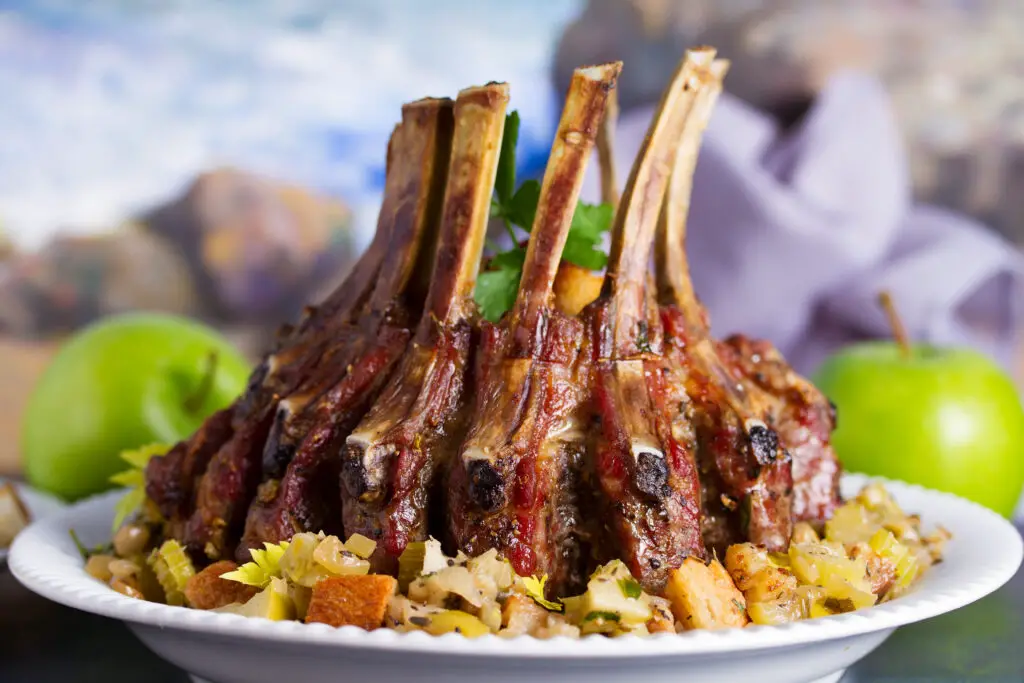
The crown roast of pork, with its rib bones tied into a circle to resemble a crown, was once a showstopping holiday dish. Stuffed with bread or rice, it was both elaborate and impressive. Families would save up for weeks just to afford one for Christmas dinner.
Modern holiday tables rarely see a crown roast because of the expense and effort required. Guests today might be shocked at how extravagant it looks, almost too fancy for a family meal. While beautiful, it’s not very practical compared to a turkey or ham. Its decline shows how holiday meals shifted toward simpler, crowd-friendly options.
12. Ribbon Candy
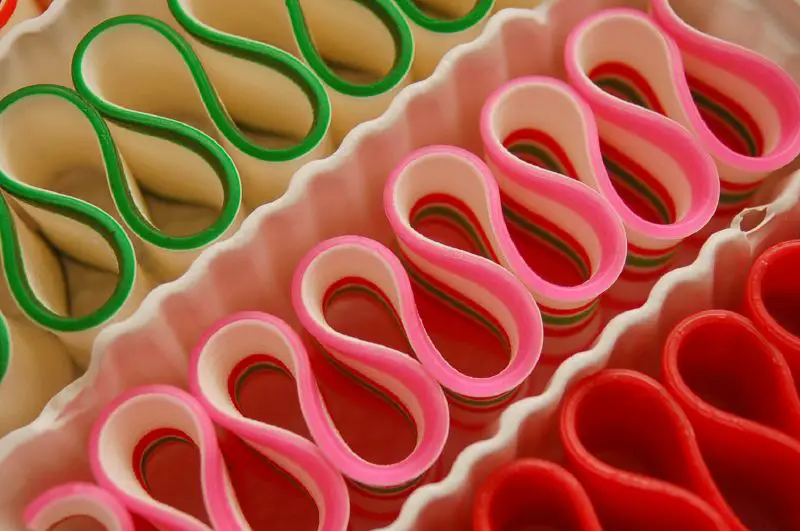
Ribbon candy was once a Christmas must-have, laid out in bowls alongside nuts and fruit. Its colorful, twisted shapes were festive and appealing to children. Breaking off a piece felt like a holiday ritual.
But ribbon candy is impractical, sticky, and often ends up glued together in one giant clump. Today’s guests might not even know what it is, or wonder why it was chosen over chocolate or cookies. While it still exists, it’s more of a nostalgic decoration than a real treat. Few people actually enjoy eating it anymore.
13. Wassail
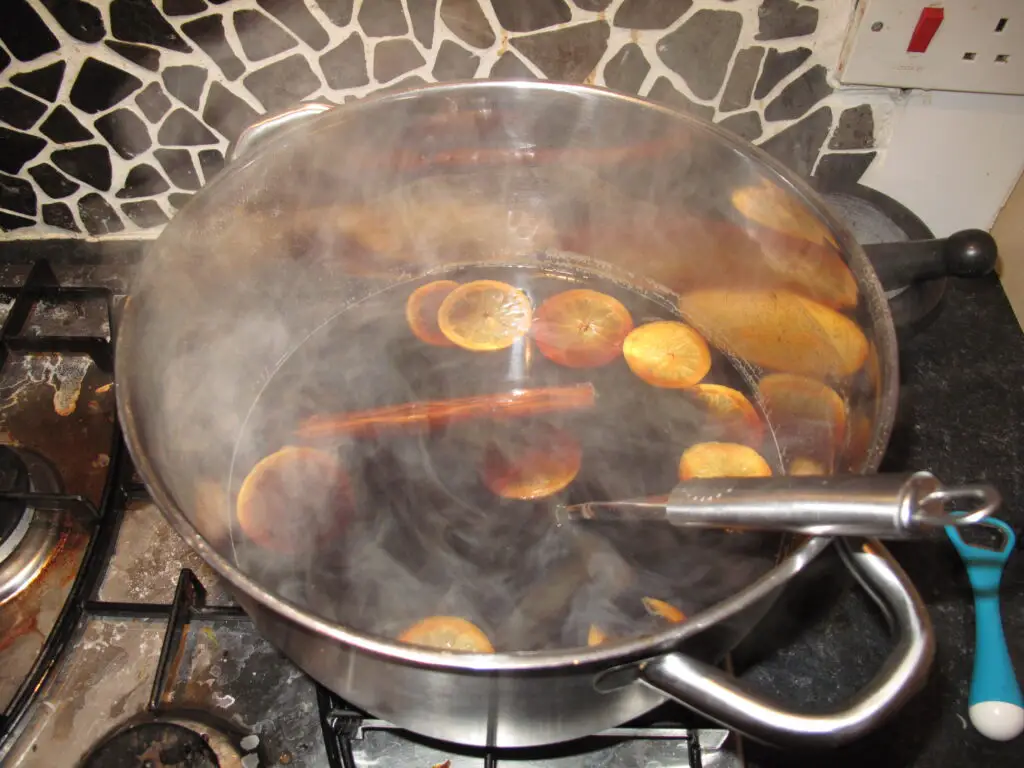
Wassail was a hot, spiced cider drink tied to old English traditions of caroling and toasting. Families would brew a big pot filled with apples, oranges, cinnamon, and cloves, creating a warm centerpiece for gatherings. It symbolized togetherness and cheer during the cold winter months.
Most people today have never tasted true wassail. Modern guests might be surprised by its intensity, as it’s less sweet than cider and sometimes included ale or spirits. Eggnog has largely replaced it as the drink of choice for Christmas. Yet, wassail lingers in carols and stories even if the bowl no longer sits on the holiday table.
14. Candied Yams with Marshmallows
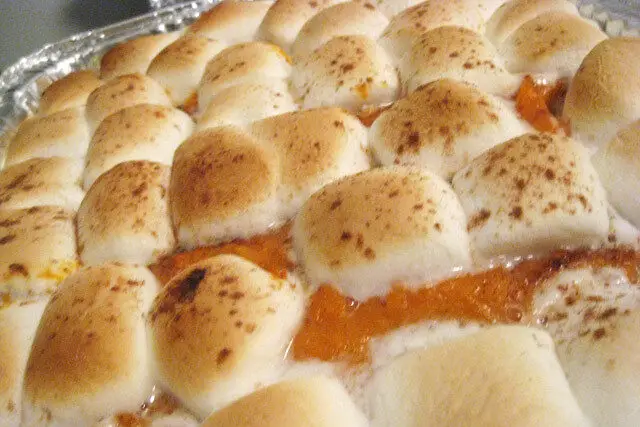
Candied yams topped with marshmallows used to be a holiday standard, especially in mid-century America. The sweetness was meant to make vegetables more appealing, and the golden marshmallow topping looked festive. Families considered it a treat that bridged side dish and dessert.
Now, the dish feels overly sweet to many modern palates. Guests might wonder why marshmallows ever belonged on top of sweet potatoes. Though it still appears at some Thanksgiving and Christmas tables, it’s more polarizing than beloved. Its presence often sparks debates between those who cherish the tradition and those who can’t believe it was ever invented.
